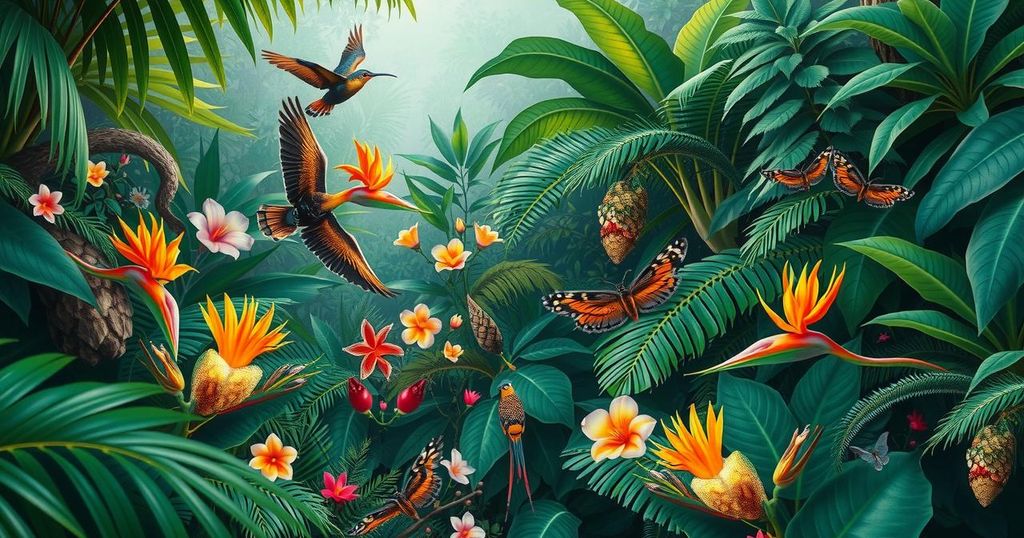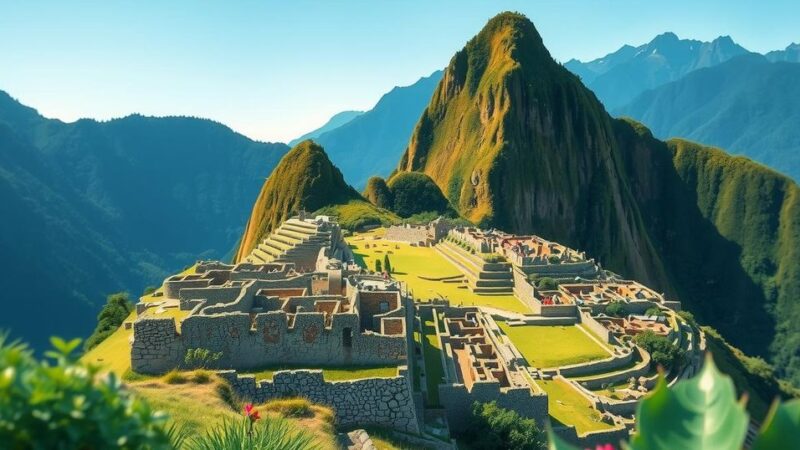Papua New Guinea houses the third largest rainforest globally, showcasing exceptional biodiversity with at least 7% of the world’s species, including numerous endemic birds. The Kumul symbolizes cultural significance, while the Hooded Pitohui represents the unique ecological life within PNG. Conservation efforts are crucial due to threats like deforestation and climate change, emphasizing the need for community involvement and education in preserving the rich biodiversity.
Papua New Guinea (PNG) contains 73 million hectares of rainforest, encompassing various ecosystems such as tropical forests, mountains, and coastlines. Covering just 1% of the Earth’s surface, it ranks as the third largest rainforest globally, following the Amazon and the Congo. Its diverse habitats host an astounding array of life, boasting at least 7% of the world’s species, including many endemic species.
PNG is home to about 4,642 vertebrate species—around 8% of the total known worldwide. The biodiversity includes over 779 bird species, with 108 species considered endemic. This remarkable diversity arises from the country’s varied habitats, including lowland forests, montane regions, and coastal areas. The first edition of the Princeton Field Guides recorded 709 bird species, while the recent edition shows a significant rise.
Birds play a crucial cultural role for the diverse populations in Papua New Guinea. The Kumul (Paradisaea raggiana), PNG’s national bird, symbolizes this connection and is featured prominently on the national flag. The extravagant plumage and courtship displays of these birds highlight their importance in cultural rituals and daily life. Another notable bird, the Hooded Pitohui (Pitohui dichrous), is the first toxic bird discovered, containing a neurotoxin in its feathers, enhancing the intrigue of PNG’s wildlife.
Various water birds inhabit PNG’s mangroves and lakes, playing vital roles in aquatic ecosystems by managing fish populations and serving as habitats for migratory species. Despite its rich biodiversity, PNG faces severe threats, including deforestation and climate change, jeopardizing its ecological balance. The International Union for Conservation of Nature (IUCN) reports that 4,315 animal species in PNG are at risk due to these factors.
Addressing these threats requires focused conservation and sustainability efforts. This includes enforcing conservation laws, supporting community-based initiatives, and enhancing environmental education. Active participation, especially from Indigenous communities who possess intricate knowledge of local ecosystems, is crucial. Integrating traditional practices with modern conservation efforts can effectively protect PNG’s unique biodiversity and natural habitats.
Raising awareness about biodiversity is essential for mobilizing public support for conservation. Understanding the value of PNG’s ecosystems and the threats they face is a pivotal step toward preservation. This weekly column aims to highlight the rich biodiversity of Papua New Guinea and contribute to wider conservation efforts, emphasizing the need to protect both culture and the natural future of the country.
In summary, Papua New Guinea is a megadiverse country hosting a significant portion of the world’s species and unique ecosystems. The rich biodiversity plays a vital role in local culture and global ecological health. However, threats such as climate change and deforestation endanger this wealth. Effective conservation strategies and education are necessary to protect PNG’s natural heritage for future generations.
Original Source: www.postcourier.com.pg






